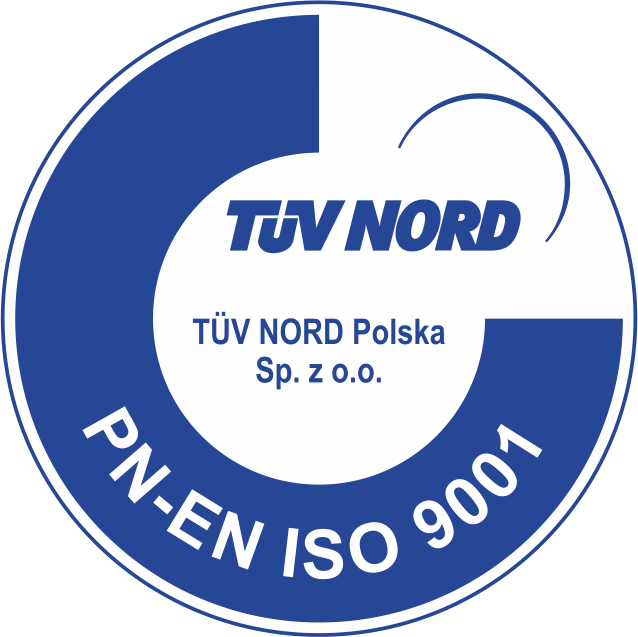Fast growing economy
Company registration services in Poland
- Registration of a company in Poland
- Qualified Electronic Signature
- Business Relocation to Poland
- Opening of a branch or a representative office in Poland
- Investments in Poland (Special Economic Zones)
- Registration of a company in more than one country simultaneously - multiple country company registration
- Visas and work permits
Please feel free to contact us via our contact form:
We are supporting business in Poland for more than 10 years. Our experience and international contact network will help you in achieving your goals.
Poland has pursued a policy of economic liberalization since 1990 and today stands out as a success story among transition economies. Poland is the 6th largest economy in the European Union, 21rd economy in the world and one of the fastest growing economies in Central Europe. At the end of 2023, Poland's GDP reached approximately $811 billion.
Fifth most populous EU member
The total area of Poland is 312,696 square kilometers, which makes it the ninth largest country in Europe and 69th in the world. With a population of over 37 million people, Poland is the fifth most populous member of the European Union and the 38th most populous country in the world.
Government
Poland is a democratic state under the rule of law, with a tripartite division of power and the president as the head of state. The president is elected by popular vote every five years. The government structure and executive powers centre on the Council of Ministers, led by the President of the Council of Ministers, i.e. prime minister. The president appoints the cabinet based on the proposal from the prime minister, typically from the majority coalition formed in the Sejm. Legislative power lies with the bicameral parliament, consisiting of the Sejm and the Senate. Judicial power is exercised by independent and autonomous courts.
Abundant human capital
Poles are one of the best-educated societies in Europe. There are over 135 public universities and over 320 non-public universities. There are over 1.45 million students in Poland, of which about 800,000 are full-time students. A young, well educated and ambitious society is Poland’s strongest asset. Creative, highly motivated Polish workers are an excellent base for conducting any form of business. A large supply of human resources is an important factor in a long-term, since Polish wages are up to four times lower than those in Western Europe.
Financial and capital markets
Poland has well developed financial markets the banking system. Giełda Papierów Wartościowych w Warszawie (The Warsaw Stock Exchange) is the official capital market and there are a few alternative smaller markets as well. The most important stock indices of the main market are: WIG, WIG20, MWIG40 and SWIG80. The WSE lists shares of more than 410 companies (including about 45 foreign ones).
Business entities
Starting a business in Poland is relatively easy. In practice, the limited liability company (LLC) is the most common form of business organisation for foreign and domestic investors engaging in business in Poland. The minimum share capital required to establish an LCC is PLN 5 000. Contribution to the share capital of an LLC have to be made prior to its registration. In addition, readymade LLCs are available for purchasing off the shelf and can be ready for trading within days. Besides, business activity in Poland can be conducted in the form of: sole proprietorship, civil partnership, joint-stock company, general partnership, partnership, limited partnership and limited joint-stock partnership.
Financial reporting
Financial Reporting Accounting standards in Poland are undergoing significant changes aimed at aligning Polish practices with International Financial Reporting Standards (IFRS). However, due to numerous amendments to IFRS, differences still persist. Accounting records should be maintained, and financial statements should be prepared in the Polish language and denominated in Polish currency. A statutory audit is mandatory for all joint-stock companies, limited liability companies, general partnerships, limited partnerships, civil partnerships, and sole proprietorships if two of the following criteria are met: a) the average annual employment, expressed in full-time equivalents, amounted to at least 50 persons; b) the total value of balance sheet assets at the end of the financial year was equivalent in Polish currency to at least EUR 3,125,000; and c) the annual net revenue was equivalent in Polish currency to at least EUR 6,250,000.
Labour
Labour costs in Poland are up to four times lower than those in the most developed economies in the EU. However, taxes and social security contributions are a heavy burden. Polish employers must pay approximately 0,70 Euros in taxes and social security for every euro paid to their employees. Employers are obliged to calculate and pay monthly withholding tax, social security and health insurance for their employees, taking into account the employee’s income, decisions on the joint taxation of spouses, and varying amounts of tax deductions. Employees are entitled to almost four week (26 days) paid holiday per twelve months worked.
Corporate taxes
The flat rate of corporate income tax is 19%. Companies having their registered office or management in Poland are subject to CIT on all their income. Companies not having their registered office or management in Poland are subject to CIT only on income earned in Poland. Taxpayers are no longer obliged to submit tax returns monthly; however, they are still obliged to pay advances on a monthly basis. Taxpayers are obliged to submit CIT-8 tax returns on an annual basis - - by the end of the third month of the following year..
The rate of withholding tax (WHT) applicable under Polish law is 20%, but a lower rate or tax exemption may be claimed under a double taxation treaty (DTT). Dividends disbursed from Poland are subject to 19% withholding tax. Again, a DTT to which Poland is a party may provide for a reduced rate of WHT. Poland has double taxation treaties with approximately 90 countries.
VAT
The standard VAT rate in Poland is 23% and applies to the majority of goods and services. Reduced VAT rates are also available, namely 0%, 5%, and 8%. The preferential 8% rate applies to most food products, pharmaceutical and medical products, restaurant and hotel services, transport services, as well as residential construction, storage facilities, and newspapers. A reduced 5% rate applies to unprocessed food products and books. VAT paid on purchases may be deducted from VAT charged on sales, which is payable through monthly VAT returns. When the 0% rate is applied, the seller does not pay VAT but is entitled to deduct input VAT on the purchase of goods and services related to the transaction.
Key VAT changes from 2025: The 0% VAT rate will be extended to all rescue vessels and lifeboats. The 8% VAT rate will continue for medical devices authorized pre-2022. VAT for live equines will increase to 23%. Hemp-derived products for recreational smoking will be taxed at 23%. Menstrual cups VAT will decrease to 5%. Until 31 March 2025, the 8% rate applies to soil improvement agents, growth stimulants, growing media, soil enhancers, liming agents, biostimulants, mixed fertilisers, and microbiological fertilising products. From 1 April 2025, the reverse charge mechanism will be extended until end of 2026, including greenhouse gas emission allowances, with changes to excise duty regulations and removal of online cash register integration requirements.
















